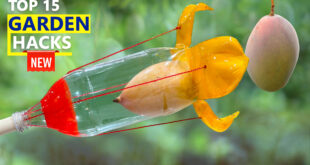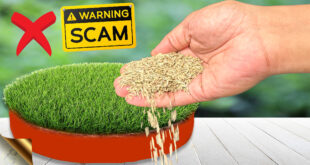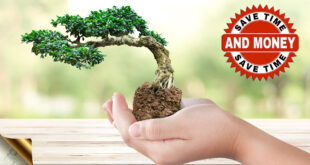In today’s post we will look into the importance of calcium in gardening and 6 easily available sources of calcium to plants, And What out of these really work and Why? Then, Finally Two Gardening Hacks or Tricks to get instant supply of calcium to your plants.
Well, before we start listing the 6 easy sources of calcium to plants, we will quickly know the importance or the function of calcium in plants. Calcium plays a very important role in overall growth of plants. It helps in absorption of major nutrients by the roots in the presence of water. It is essential for formation and integrity of plant cell wall and hence very essential for fruit formation.
So, What are the
signs and symptoms of calcium deficiency in plants?
Calcium deficiency can cause necrosis or death of plant tissue at certain parts
of the plant particularly at the tips of fruits and tips of growing leaves which
appear like burnt tips. Blossom End rot Disease seen in tomatoes, peppers and
squashes is the best example of such necrosis due to calcium deficiency. Plant
chlorosis or leaf yellowing and stunted growth are also signs of calcium deficiency.
Having
said that, now let’s list out the top 6 options or the sources of calcium to
plants. If you do vegetable gardening or intend to grow veggies organically
in your home or terrace garden, please follow this till the end!
6. Milk: This is the most expensive option and not recommended because
most of the ingredients found in milk along with calcium are not required by
plants. Like Fats, lactose and proteins are not essential to plants. But, If
your milk is spoilt, you may dilute it and water it to your plants or make a
foliar spray by mixing it with compost tea, like how we have done this in my
previous posts.
5.
Egg Shells: No doubt egg shell is composed of calcium carbonate. You
know Even one of the hardest thing Marble is calcium carbonate and also the
soft Chalk sticks is also calcium carbonate.
The point here is if you add crushed or even powdered egg shells into soil, it
might take many months and even years for it to decompose and release that
calcium for uptake into the soil. This option is least effective for treating a
acute disease like Blossom end rot or a stunted plant. Perhaps this option of
powdered eggshells may be utilized while preparing your potting mix before
planting. Another option for instantly providing
calcium for plants is to water the plants with the water used to boil eggs. Do
not throw away this water. Cool it and water your plants with this. Egg shells
release some calcium into water during the process of egg boiling.
4. Bone meal: Yes! It’s an excellent source of calcium, but the problem is the Plants can only get phosphorus from bone meal and cannot utilize calcium from bone meal. This is because of Garden Soil PH of around 6.5, that’s slightly acidic for most garden plants. And at this PH level, it’s not a good option to use bone meal as a source of calcium.
3. Expired Calcium or Iron Tablets: Are these of any use to the plants? Certainly not for instant supply of calcium unlike in humans. These are complex binding forms or compounds in these tablets that take time to decompose and release them for uptake by plants. The best way to use these expired tablets is to add them to your compost bin. The final compost formed will be rich in calcium and other minerals.
2. Lime: Agricultural Lime is chemically calcium Hydroxide. And another variety garden lime called Dolomite lime is more commonly used and It’s also a good source of magnesium for plants. No doubt, it’s a great source of calcium. The only draw back is it increases your soil PH level to alkaline levels which is not desirable for most plants. Unless, you have tested your soil PH and if its found too acidic like below 5.5 levels, you can safely use lime for your plants. This PH meter is quite handy and very inexpensive. You can buy that Online from amazon link in description. Well, The dosage of Lime should not be more than 1 teaspoon per litre of water or 1 tablespoon per gallon of water once in a while like once in 3 months. But still if you want to use this and keep your soil ph unchanged, you have many options – like adding lot of compost manure to raise the PH or you can mix about 10 gms of alum powder in 1 liter of water to compensate for the soil ph level because alum acidifies the soil or alternately add 1 or two teaspoons of white distilled vinegar into this.
1.
Gypsum: Gypsum is one of the best sources of calcium to plants and the
safest option simply because it will not alter the soil ph levels. Chemically its calcium
sulfate dehydrate. Its also called Lime sulfate. Gypsum is also used in clayey
soils to remove soil compaction and improve soil drainage. It drastically
reduces the sodium levels or salinity in the soil, which is very important if
you are watering your plants with salty or hard water.
Well, The Dosage for gyspum is 1 teaspoon per litre of water or 1 tablespoon per gallon of
water once in about 3 months. Depending on the container size or the plant size
you can safely increase the dosage if necessary.
And Finally, the most inexpensive sources of
calcium for home gardening: The Calcium Hacks using Chalk Pieces, Egg shells and
White Vinegar.
Firstly the Chalk Sticks Hack:
Chalk is chemically Calcium Carbonate. You can take white chalk sticks and bury
them into the soil while planting your veggies. That’s in intital stages. This
really works wonders for plants like Tomatoes, Peppers, squashes, egg plants
and almost any vegetable plant. You can bury two chalk sticks per container for
these vegetable plants safely if you soil ph is around 6.0. For other plants to
provide slow release calcium source, you can bury one chalk stick per container.
The second hack is The Vinegar Hack. To treat blossom end rot disease or any acute deficiency of calcium in plants. You can mix lime and vinegar or egg shell powder + Vinegar to break down the compound and prepare a water soluble form of calcium that can be quickly absorbed by the roots. Make sure if you use egg shells, sun dry them for atleast two days or microwave them for few minutes.
Its simple! Just take a handful of egg shell powder or one or two spoons of lime and add same amount of white vinegar to this. You can see a chemical reaction between calcium carbonate and acetic acid which releases carbondioxide as gas and free calcium into the solution. You can leave this alone for few hours and then mix with water and water your plants. This is the cheapest source of calcium to treat acute deficiency. That’s it!
 GKVKs – Gardening Tips and Store Gardening Tips and Store
GKVKs – Gardening Tips and Store Gardening Tips and Store




Very nice presentation. Please update latest informations through you tube.
Thanks for the last one. Now we can use eggshell.